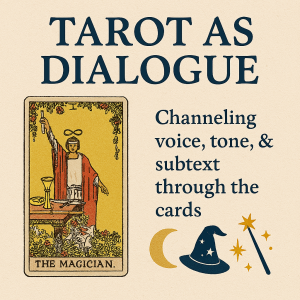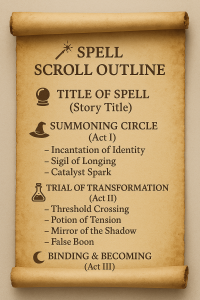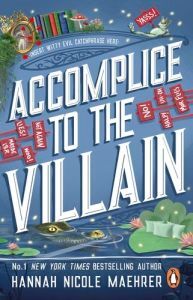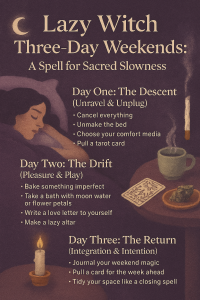Ellie Potts's Blog
September 4, 2025
The Weight We Carry
Are you holding a grudge? About?
A grudge is like a burning coal,
Clutched tight within the heart and soul.
It sears the hand that holds it near,
Feeding on anger, doubt, and fear.
It whispers lies in quiet tones,
Turns peaceful minds to sharpened stones.
While those we blame move on, forget–
We stay behind in self-made debt.
Forgiveness isn’t weakness, friend,
It’s choosing peace, a means to mend.
Release the flame, unclench the fist–
And feel the calm you almost missed.
Superhero Movies & Identity: Writing Characters with Secret Selves

Exploring Duality, Masks, and the Power of Vulnerability
Superhero stories aren’t just about capes and cosmic battles.
They’re modern myths—rituals of identity, shadow, and transformation.
At their core, they ask: Who am I when no one’s watching?
And: What part of me must stay hidden to protect what I love?
When writing characters with secret selves, superhero movies offer a rich blueprint. Beneath the action lies emotional tension, duality, and the ache of becoming.
Let’s dive into the archetypes, themes, and tools that help you write characters who wear masks—and what happens when those masks crack.
 Duality: The Sacred Split
Duality: The Sacred SplitEvery superhero has two selves: the public and the private.
Peter Parker vs. Spider-ManBruce Wayne vs. BatmanDiana Prince vs. Wonder WomanThis duality isn’t just plot—it’s emotional architecture. It reflects:
The tension between duty and desireThe longing to be known vs. the need to protectThe fear that our true self is too much—or not enough Writing Prompt:
Writing Prompt:
Give your character two names. One for the world. One for the self they hide. What does each name protect? What does each name cost?
 Masks: Protection or Prison?
Masks: Protection or Prison?Masks conceal—but they also reveal.
They allow characters to act outside their limitations. But they also isolate them.
A mask can be:
A literal disguise (costume, alias)A psychological defense (humor, perfectionism, detachment)A magical or symbolic veil (glamour, enchantment, ritual)The question isn’t just why do they wear it?
It’s what happens when they take it off?
 Writing Prompt:
Writing Prompt:
Write a scene where your character’s mask slips. What do they say—or stop themselves from saying? Who sees them?
 Power & Responsibility: The Archetypal Burden
Power & Responsibility: The Archetypal BurdenSuperheroes often inherit power through trauma.
They didn’t ask for it. But now they must choose how to wield it.
This creates internal conflict:
Can I be powerful and still be kind?Do I owe the world my gifts—or do I owe myself healing?If I fail, who suffers?Responsibility becomes a crucible. Power becomes a mirror.
 Writing Prompt:
Writing Prompt:
Give your character a moment of choice: use their power for personal gain, or for someone else’s healing. What do they choose—and why?
 Vulnerability: The True Superpower
Vulnerability: The True SuperpowerThe most compelling heroes aren’t invincible. They’re emotionally exposed.
They grieve. They doubt. They long to be loved without the mask.
This vulnerability deepens character arcs:
A hero who can’t save everyoneA vigilante who fears intimacyA chosen one who resents their destiny Writing Prompt:
Writing Prompt:
Let your character fail. Let them break. Let them be held.
What truth do they speak when they think no one’s listening?
 Final Reflection: The Secret Self as Spellwork
Final Reflection: The Secret Self as SpellworkWriting characters with secret selves is a ritual.
It’s shadow work. It’s myth-making. It’s asking:
What part of me do I hide—and what would happen if I let it speak?
Superhero stories remind us that masks are both armor and invitation.
That duality is sacred. That vulnerability is heroic.
So write the secret self.
Let it whisper. Let it rage. Let it rise.
September 3, 2025
Creative Blocks as Shadow Messengers

Reframing Procrastination, Perfectionism & Burnout as Invitations to Listen
We often treat creative blocks like villains.
Procrastination is laziness. Perfectionism is control. Burnout is failure.
But what if these blocks aren’t obstacles to push through—but messengers from the shadow?
In Jungian terms, the shadow is the part of ourselves we repress or ignore. It holds our fears, wounds, and unmet needs—but also our creative gold. When we hit a block, it’s often because the shadow is speaking. Not to sabotage us—but to summon us inward.
Let’s reframe three common blocks as shadow archetypes—and explore what they’re really trying to say.
 Procrastination: The Hermit in Disguise
Procrastination: The Hermit in DisguiseWe think procrastination means avoidance. But often, it’s a sacred pause. A refusal to perform. A whisper from the Hermit archetype:
“You’re not ready yet. Go inward. Listen.”
Procrastination may signal:
Fear of being seen too clearlyA need for solitude or integrationResistance to creating from a place of depletion Ritual Reframe: Instead of forcing productivity, light a candle and journal:
Ritual Reframe: Instead of forcing productivity, light a candle and journal:
“What am I avoiding—and what wisdom lives there?”
 Perfectionism: The Wounded Magician
Perfectionism: The Wounded MagicianPerfectionism wears the mask of mastery, but beneath it is a wound. The Magician archetype distorted—trying to control the outcome instead of trusting the process.
Perfectionism may signal:
Fear of rejection or shameA desire to protect something sacredA longing to be seen as “worthy” before being real Ritual Reframe: Create something intentionally imperfect. A messy sketch. A flawed sentence. Let it live.
Ritual Reframe: Create something intentionally imperfect. A messy sketch. A flawed sentence. Let it live.
“What part of me believes I must be flawless to be loved?”
 Burnout: The Phoenix Mid-Death
Burnout: The Phoenix Mid-DeathBurnout isn’t weakness—it’s transformation. The Phoenix archetype is burning down the old self. Burnout says:
“You’ve been creating from obligation, not soul. Rest. Rebirth is coming.”
Burnout may signal:
Over-identification with outputDisconnection from joy or ritualA cycle that needs to end Ritual Reframe: Build an altar to rest. Include objects that represent softness, silence, and renewal.
Ritual Reframe: Build an altar to rest. Include objects that represent softness, silence, and renewal.
“What must I release to rise again?”
 Listening to the Shadow
Listening to the ShadowCreative blocks aren’t punishments. They’re invitations.
Each one carries a message from the depths:
When we honor the shadow, we reclaim our creative power—not as endless output, but as sacred expression.
 Final Blessing
Final BlessingMay your blocks become guides.
May your procrastination become pause.
May your perfectionism become permission.
May your burnout become rebirth.
Remember, your shadow is not your enemy. It’s your muse in disguise.
September 2, 2025
Tarot as Dialogue: Channeling Voice, Tone & Subtext Through the Cards

What if your characters spoke like tarot cards?
Not in riddles or fortune-cookie wisdom—but in voices shaped by archetype, emotion, and shadow.
Tarot isn’t just a tool for plotting or character development—it’s a mirror for dialogue. Each card carries a tone, a rhythm, a wound. When you write dialogue through the lens of tarot, you tap into emotional subtext that feels mythic, raw, and real.
Let’s explore how.
 Why Tarot Works for Dialogue
Why Tarot Works for DialogueTarot cards are emotional archetypes. They speak in metaphor, tension, and transformation. When you assign a card to a character—or to a specific scene—you gain access to:
Voice: How they speak (direct, poetic, evasive, commanding)Tone: The emotional flavor (grief, longing, defiance, awe)Subtext: What they’re really saying beneath the wordsThink of it as channeling. You’re not writing dialogue—you’re divining it.
 Major Arcana as Voice Templates
Major Arcana as Voice TemplatesHere’s how a few Major Arcana cards shape character voice:
CardVoice StyleTone/SubtextThe MagicianPersuasive, clever, rhythmic“I control the narrative.”The High PriestessQuiet, cryptic, layered“I know more than I say.”The EmpressSensual, nurturing, poetic“I want you to feel safe—but I need to be seen.”The EmperorCommanding, clipped, formal“I won’t show weakness.”The LoversVulnerable, romantic, torn“I’m choosing between desire and duty.”DeathCalm, inevitable, sparse“This is the end—and the beginning.”The DevilSeductive, mocking, intense“You already said yes.”The StarHopeful, dreamy, gentle“I still believe in you.”
Prompt: Choose a card and write a scene where your character speaks in its voice. Then flip the card—what’s the shadow version of that voice?
 Minor Arcana as Emotional Texture
Minor Arcana as Emotional TextureThe suits add nuance to tone and emotional subtext:
Cups: Emotional, intuitive, longing. Dialogue is soft, indirect, full of pauses and sighs.Swords: Sharp, intellectual, defensive. Dialogue cuts, deflects, rationalizes.Wands: Passionate, impulsive, visionary. Dialogue bursts, interrupts, inspires.Pentacles: Grounded, cautious, practical. Dialogue is slow, deliberate, rooted in reality.
Prompt: Write the same line of dialogue four ways—once for each suit. Notice how the emotional weight shifts.
 Dialogue Ritual: Tarot Spread for a Scene
Dialogue Ritual: Tarot Spread for a SceneBefore writing a scene, pull three cards:
Voice Card – How does the character speak?Tone Card – What emotion colors their words?Subtext Card – What truth hides beneath the surface?Example:
Voice: Knight of Swords → fast, blunt, righteousTone: Five of Cups → grief, regretSubtext: The Moon → confusion, hidden motivesDialogue might sound like:
“You think I wanted this? I did what I had to. You weren’t there. You didn’t see what I saw.”
 Final Reflection: Dialogue as Divination
Final Reflection: Dialogue as DivinationWhen you write dialogue through tarot, you’re not just crafting words—you’re channeling emotional truth. You’re letting archetypes speak through your characters, revealing wounds, desires, and transformations they may not even understand yet.
Let your dialogue be a ritual. Let your characters speak in spells.
September 1, 2025
The Enchanted Outline: Map Your Story Like a Spell

What if your story wasn’t just a structure—but a spell?
What if each beat pulsed with intention, each turning point a ritual, each character arc a transformation etched in moonlight?
Welcome to The Enchanted Outline, where plotting becomes enchantment. Whether you’re crafting magical realism, folklore-infused fiction, or archetypal journeys, this guide invites you to map your story like a spell scroll—layered, luminous, and alive.
 Act I: The Summoning Circle (Setup)
Act I: The Summoning Circle (Setup)Metaphor: The circle is cast. Energy gathers. The protagonist is called.
Incantation of Identity: Who is your main character before the magic begins? What masks do they wear?Sigil of Longing: What do they yearn for? What shadow whispers beneath their desire?The Catalyst Spark: A strange letter, a broken mirror, a forbidden door—what cracks open the ordinary?This act is your ritual preparation. Light the candles. Name the wound. Invite the unknown.
 Act II: The Trial of Transformation (Confrontation)
Act II: The Trial of Transformation (Confrontation)Metaphor: The spell deepens. The protagonist enters the liminal.
Crossing the Threshold: They step into the forest, the underworld, the dream. There’s no going back.Potion of Tension: Mix conflict, mystery, and emotional stakes. Stir until it simmers.Mirror of the Shadow: They face what they fear—often in another character, or in themselves.The False Boon: A moment of triumph that’s not what it seems. The spell backfires. The cost is revealed.This act is your cauldron. Let it bubble. Let it burn. Let your character unravel and reweave.
 Act III: The Binding & Becoming (Resolution)
Act III: The Binding & Becoming (Resolution)Metaphor: The spell completes. The protagonist is remade.
The Sacrifice Sigil: What must be given up? What truth must be faced?The Final Rite: A confrontation, a choice, a transformation. The climax is the spell’s peak.The Rebirth Rune: Who are they now? What magic do they carry forward?This act is your altar. Close the circle. Bury the old name. Bless the new.
 Final Blessing
Final BlessingPlotting doesn’t have to feel mechanical. It can be intuitive, ritual-rich, and emotionally resonant. Let your outline be a living spell—one that guides your characters through shadow and light, longing and becoming.
August 31, 2025
REGENMIST™
This short story came from a Facebook post by Melissa. Imagine if there was a “spray” that could be used on older tissue, that when applied it not only regenerates new tissue, but also heals “sick” tissue. We could literally go into someone’s lungs, spray the medication, and voila new, healthy lungs.

REGENMIST
“Heal What Was Never Meant to Return”
Doll’s face gleamed under the studio lights, flawless and eerily still. The commercial director called for take five, but she didn’t move. Her assistant dabbed at her cheek—where the scar had been. It was gone now. Not faded. Gone. The skin was too smooth, too new, like it had never known injury. Like it had never known Doll.
She turned to the camera, lips parted in a perfect smile.
“RegenMist: Renewal in a Bottle.”
The mist hissed from the sleek silver canister, catching the light like holy water. The tagline pulsed across the screen. “Heal from the inside out.”
Behind the scenes, Dr. Kessler watched the playback with a clenched jaw. He had invented RegenMist to repair battlefield trauma. But the formula had evolved. It didn’t just heal—it remembered.
He leaned close to the journalist beside him, voice low.
“We’ve seen tissue regrow that was surgically removed. Tattoos reappear. Teeth in places they shouldn’t be. One patient’s appendix came back. Twice.”
The journalist laughed nervously. Kessler didn’t.
“It’s not healing. It’s restoration. Even if what’s restored… wasn’t meant to be.”
In the boardroom, the creators of RegenMist sat in silence as the military liaison reviewed the file. One executive cleared his throat.
“There are side effects. Phantom limbs. Regrown organs with… anomalies. But the Army wants it now. Field regeneration. No downtime.”
Another added, “We’ve seen skin that remembers trauma. A soldier regrew his childhood burn mark. Another grew a second spine.”
The liaison smiled. “We’ll take it. And we’ll take the silence clause too.”
Five years later, Dr. Milo Crane stood over a patient with a ruptured abdomen. He sprayed RegenMist into the wound. The flesh closed instantly, pink and perfect. The patient gasped, then sobbed.
Milo had used it on himself too. Torn ligaments. Cracked ribs. A failing liver. Each time, the mist worked. But lately, he’d noticed things.
His skin shed in translucent sheets, revealing layers beneath that shimmered oddly. His fingernails grew back faster than he could clip them. He woke with a second tongue forming beneath the first. He dreamed of organs rearranging themselves. Of bone blooming like coral.
He tried to stop using it. But the pain returned. And so did the hunger.
One night, he sliced open his forearm. Not out of desperation—out of curiosity. The mist hissed. The wound closed. But something else came with it.
A nub. A tiny, wriggling nub. Like a finger. But not his.
He stared. It twitched.
He began documenting the changes. His skin now had memory. Scars he’d never had appeared. A birthmark he’d removed as a teen returned, darker, pulsing. His left eye began to see things his right could not—shadows that moved, faces that weren’t there.
He stopped sleeping. He stopped eating. He sprayed.
And sprayed.
And sprayed.
Until one morning, he woke to find his body no longer his own. His chest had split open—not with pain, but with purpose. Inside, nestled between his lungs, was something new. A cluster of tissue. Eyes. Teeth. A whispering mouth.
It spoke in a voice he recognized.
“You are not healed. You are remembered.”
Milo screamed. But the mouth only smiled.
Because I can.
Why do you blog?
Actually I touched on that yesterday. I hope by doing just a little blogging everyday it will encourage me to write more and be more motivated to finish projects.
This leads into My September goals:
Finish formatting my Cannabis Grimoire so I can release it. Start in on my edits for Black Star. Black Star cover release. Format. Release in October.Possibly try to start the interviews for the audiobook version. Start the final rewrite edit of Just Between You and Me.August 30, 2025
100 days

I made it to 100! 100 posts ago I made a deal with myself that I will blog everyday. Even if I’m not working on a book this will keep me going. Trying to break myself of my writers block. I’m proud of myself for sticking to it. Thank you for reading and commenting. Let’s see how far I can go. 
Audiobook Review: Accomplice to the Villain by Hannah No ole Maehrer

Evie Sage and The Villain are back. This one gives you a few different POEs. The one from Kingsley is almost heartbreaking. This grumpy boss series will have you laugh out loud and swoon. Rebecca and Blade! Omg. While those stuck at the castle are trying to discover who the traitor is, The Villain, Evie and his crew are trying to break some curses. I thought this was a trilogy it’s not. And the twists caught me off guard. This is a fun series. I look forward to book 4!
Once Upon a Time meets The Office in Hannah Nicole Maehrer’s laugh-out-loud viral TikTok series turned novel, about the sunshine assistant to an Evil Villain…and their unexpected romance.
REWARD OFFERED: Apprentice to The Villain wanted for treason (light), magical property damage (alleged), and one incident involving a weaponized scone (accurate). Frequently seen with a grumpy frog (crowned, judgmental). Answers to “Evie” or “Stop that.”
Evie Sage didn’t mean to become the right-hand woman to the kingdom’s most terrifying villain. One minute, she was applying for an entry-level position that promised “light paperwork and occasional beheadings,” and the next, she was knee-deep in magical mayhem, murder plots, and an entirely inappropriate crush on her brooding, sharp-jawed, walking disaster of a boss.
Now, with a magical prophecy unraveling, assassins showing up in the break room, and a suspicious amount of frogs wearing crowns, Evie has to figure out how to survive her job without setting the kingdom on fire—or her dignity, which is hanging by a very sarcastic thread.
Being evil-adjacent was never part of the five-year plan. But then again…neither was falling for The Villain.
A magical office comedy with grumpy bosses, snarky frogs, and definitely-not-feelings.
August 29, 2025
Lazy Witch Three-Day Weekends: A Spell for Sacred Slowness

Not every witch flies by moonlight or brews potions at dawn. Some of us cast spells from bed, wrapped in velvet blankets, sipping lavender tea while reruns play in the background. We are the lazy witches—and we honor rest as ritual.
Three-day weekends are our sacred sabbaths. Not for productivity. Not for performance. But for pleasure, pause, and slow magic.
Here’s how to enchant your next long weekend with lazy witch energy.
 Day One: The Descent (Unravel & Unplug)
Day One: The Descent (Unravel & Unplug)This is the exhale. The shedding. The sacred flop.
Rituals for Day One:
Cancel everything. Let your calendar breathe.Unmake the bed. Turn it into a nest.Choose your comfort media. Rom-coms, Studio Ghibli, or that playlist that feels like a hug.Pull a tarot card. Ask, “What does my body need?”This day is for decompression. No guilt. No goals. Just softness.
 Day Two: The Drift (Pleasure & Play)
Day Two: The Drift (Pleasure & Play)Now that you’ve unraveled, you drift. You follow whims. You indulge.
Rituals for Day Two:
Bake something imperfect. Burnt edges are part of the charm.Take a bath with moon water or flower petals.Write a love letter to yourself.Make a lazy altar. A candle, a crystal, a half-eaten croissant. It counts.This day is for sensuality, silliness, and spells made from crumbs and laughter.
 Lazy Witch Cannabis Rituals (Optional, Intentional, Sensory)
Lazy Witch Cannabis Rituals (Optional, Intentional, Sensory)Cannabis, when approached with intention, can be a gentle ally in the lazy witch’s toolkit—enhancing presence, softening tension, and deepening sensory magic.
Ways to Incorporate Cannabis:
Pre-roll as a pre-spell: Light a joint before journaling or pulling cards. Let the smoke be a signal to slow down.Infused bath ritual: Add a CBD bath bomb or oil to your soak. Let your muscles melt into the water.Edible enchantment: Pair a low-dose edible with a cozy film or creative play. Let it guide you into whimsy.Smoke-cleansing with intention: Use cannabis smoke like incense—waft it around your space while whispering a mantra like “I soften into myself.”Cannabis Mantras:
“I inhale ease. I exhale urgency.”“My body is a temple of sensation.”“I honor my rhythms, not the clock.”Whether you partake or not, the invitation is the same: deepen into your senses, honor your body’s wisdom, and let pleasure be your guide.
 Day Three: The Return (Integration & Intention)
Day Three: The Return (Integration & Intention)You’ve rested. You’ve wandered. Now you return—not to hustle, but to intention.
Rituals for Day Three:
Journal your weekend magic.Pull a card for the week ahead.Tidy your space like a closing spell.Choose one small intention.This day is for gentle re-entry. For sealing the spell. For carrying softness into the week.
 Lazy Witch Mantras“Rest is resistance.”“My magic blooms in stillness.”“I don’t need to earn softness.”“Even my crumbs are sacred.”
Lazy Witch Mantras“Rest is resistance.”“My magic blooms in stillness.”“I don’t need to earn softness.”“Even my crumbs are sacred.” Closing Reflection
Closing ReflectionLazy witch weekends aren’t escapes—they’re reclamations. Of time. Of tenderness. Of the magic that lives in slowness.
So the next time a three-day weekend rolls around, don’t fill it. Feel it. Let it be a spell. Let it be a sanctuary. Let it be yours.



